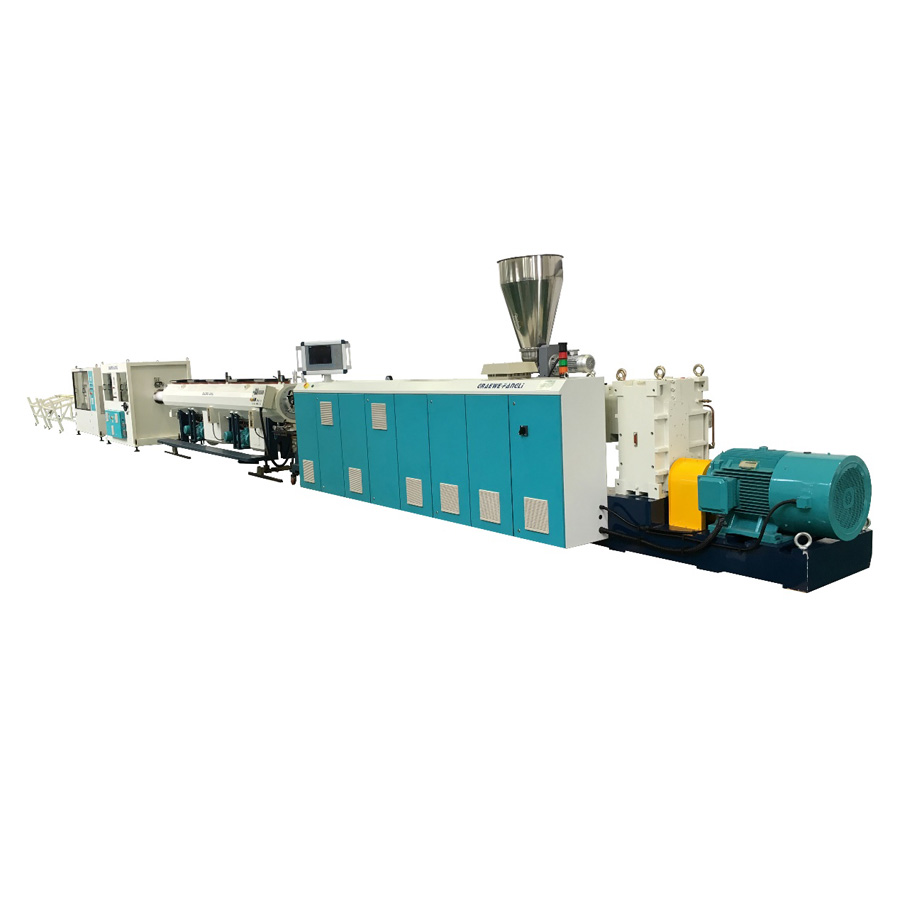- English
- Español
- Português
- русский
- Français
- 日本語
- Deutsch
- tiếng Việt
- Italiano
- Nederlands
- ภาษาไทย
- Polski
- 한국어
- Svenska
- magyar
- Malay
- বাংলা ভাষার
- Dansk
- Suomi
- हिन्दी
- Pilipino
- Türkçe
- Gaeilge
- العربية
- Indonesia
- Norsk
- تمل
- český
- ελληνικά
- український
- Javanese
- فارسی
- தமிழ்
- తెలుగు
- नेपाली
- Burmese
- български
- ລາວ
- Latine
- Қазақша
- Euskal
- Azərbaycan
- Slovenský jazyk
- Македонски
- Lietuvos
- Eesti Keel
- Română
- Slovenski
- मराठी
- Srpski језик
How to effective use German Design CPVC pipe extrusion line
2024-12-26
To effectively use a German-designed CPVC pipe extrusion line, follow these best practices to optimize performance, maximize output, and maintain consistent quality. German technology is known for precision and reliability, so leveraging its capabilities requires proper operation and maintenance.
1. Pre-Installation Preparation
Site Readiness:Ensure the factory layout accommodates the extrusion line, including sufficient space for equipment, material storage, and product handling. Install proper ventilation and cooling systems to manage heat from extrusion.
Power Supply:Confirm the line’s power requirements (voltage, phase, and frequency) are compatible with your facility.
Training:Provide thorough training to operators on German design standards and the specific functionalities of the machine.
2. Optimize Raw Materials
High-Quality CPVC Resin:Use resins that meet the machine specifications and required product standards (e.g., ASTM, DIN).
Additives and Compounds:Use stabilizers, lubricants, and colorants recommended for CPVC extrusion to achieve desired pipe properties and minimize defects.
3. Fine-Tune Machine Settings
Temperature Control:Precisely set heating zones along the extruder barrel to ensure uniform melting of CPVC resin.
Extrusion Speed:Calibrate the line speed to match the pipe size and wall thickness while maintaining material integrity.
Screw Design:Use the correct screw configuration for optimal mixing and extrusion of CPVC resin.
4. Monitor and Maintain Consistent Quality
Dimensional Accuracy:Regularly check pipe dimensions (outer diameter, wall thickness) using gauges to ensure compliance with standards.
Surface Finish:Adjust settings to eliminate roughness, ridges, or discoloration on pipe surfaces.
Post-Extrusion Cooling:Use efficient cooling baths to maintain pipe shape and prevent thermal stress.
5. Implement Automation Features
Automated Controls:Leverage built-in PLC or HMI systems for precise monitoring and adjustment of temperature, pressure, and extrusion speed.
Real-Time Feedback:Use sensors and quality control systems to identify and correct defects during production.
6. Ensure Regular Maintenance
Preventive Maintenance:Schedule regular checks for wear and tear on components like screws, barrels, and die heads.Clean the extrusion line periodically to avoid material buildup.
Spare Parts Inventory:Keep critical spare parts (e.g., heating elements, sensors) readily available to minimize downtime.
7. Improve Efficiency in Bulk Production
Batch Scheduling:Plan production schedules to minimize downtime during material or die changes.
Multi-Diameter Production:Use quick-change die heads to switch between different pipe sizes efficiently.
Material Recycling:Reuse trimmings and off-spec pipes where possible, using appropriate regrind systems.
8. Adhere to Safety Protocols
Operator Safety:Train operators on handling high temperatures and pressurized systems.Install emergency stop mechanisms and protective covers.
Regulatory Compliance:Follow CE certification guidelines and local safety regulations for equipment operation.
9. Leverage German Precision for Innovation
Custom Pipe Designs:Utilize the machine’s precision for producing specialty pipes (e.g., multilayer or reinforced pipes).
Specialized Coatings:Integrate capabilities for adding external or internal coatings, such as UV protection or chemical barriers.
10. Evaluate and Upgrade Over Time
Performance Monitoring:Analyze production data to identify areas for improvement (e.g., speed, material usage, defect rate).
Technology Updates:Stay updated on new upgrades or attachments from the German manufacturer to enhance functionality.
By adhering to these guidelines, you can maximize the efficiency, output quality, and longevity of a German-designed CPVC pipe extrusion line. Would you like help with troubleshooting specific issues or optimizing your setup?




